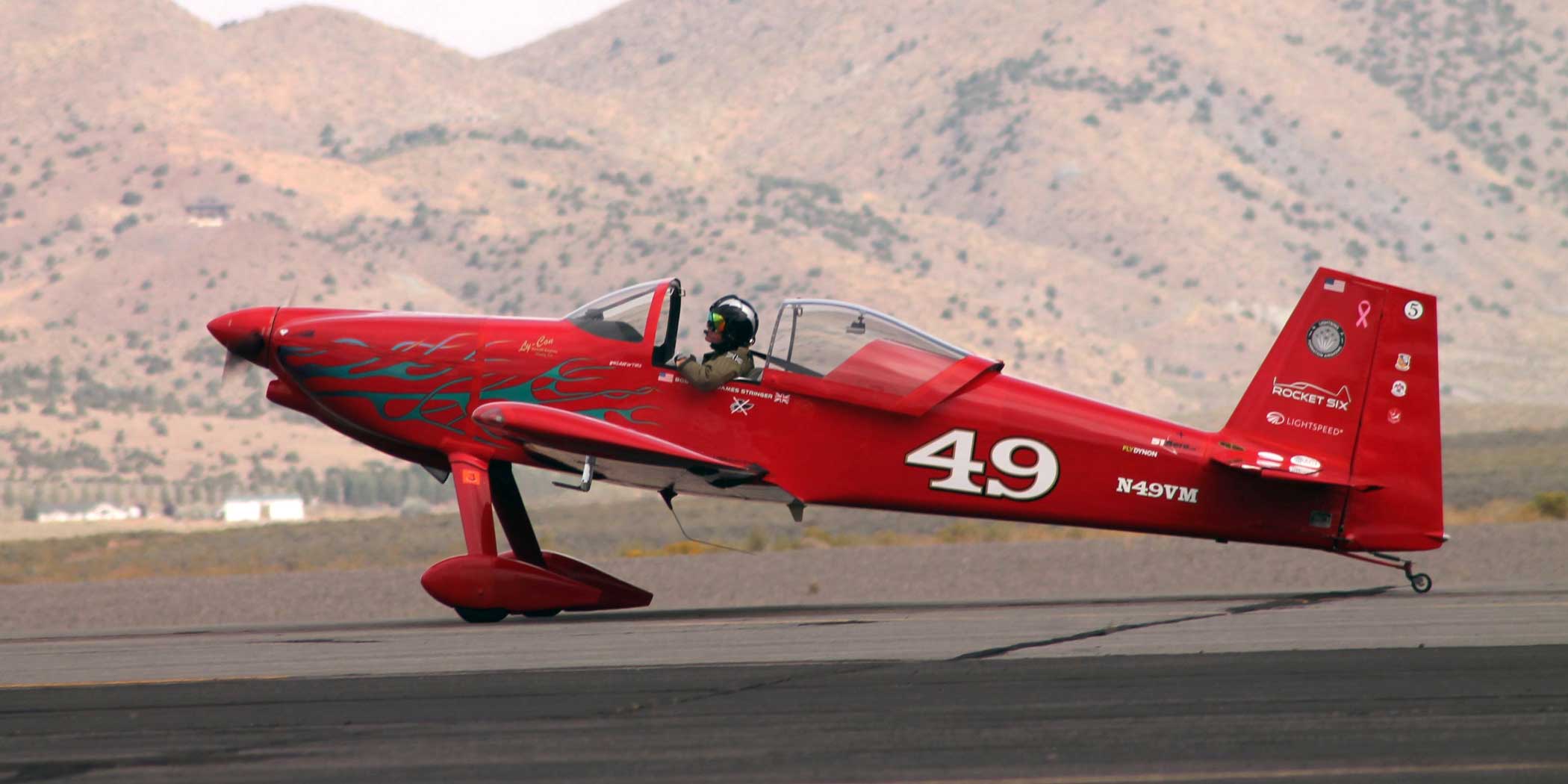Billed as the fastest motorsport in the world, the Reno Air Races always attract a large crowd of spectators over five days. But entrants in the Unlimited class that prompts that description are dwindling. As a counterbalance, the jet class is growing, and racers exceed 400 mph, as they do in the sports class. The other four classes also boast good participation.
Private pilot Bill Smith Jr. has been attending Reno as a spectator for 50 years. He has seen the Unlimited Class grow and decline, as the cost of maintaining and insuring those sensual warbirds has soared. Over recent time, prize money has dwindled from more than $700,000 to less than $100,000, as large sponsors have pulled out, he says. Still, Smith also enjoys the Sports and Jet classes, and each year brings a reunion of old friends.
Another informed observer told AIN that it costs a yearly $250,000 to keep a warbird in top shape for Reno. “In the case of a P-51 Mustang, why spend that money when you could convert it to a two-seater, and sell it for $2 million?” he added.

Robin Crandall owns a Hawker Sea Fury named “Sawbones,” which is raced by Curt Brown. Crandall has been coming to Reno for 10 years, supported by various sponsors (12 this year) and an all-volunteer crew. During that time, the Wright R3350 engine that replaced the original Bristol Centaurus has been removed three times. Custom stainless steel exhaust stacks have been installed. A new propeller was installed this year. Crandall told AIN that the Sea Fury must be officially inspected each year, and insurance costs $17,000. Still, he owns a warbird that can reach 420 mph and is worth $1 million.

“Sawbones” would have been contending for top place in the “gold” final this year if the canopy had not blown off during practice. Brown was uninjured, and Crandall has a replacement back at his Minnesota base. The top dog for 2019 was Dennis Sanders in another Sea Fury, who clocked 403 mph round the eight-lap, near-63-mile circuit. There were 13 starters but only four finishers in this year’s series of Unlimited races.

The Jet class was won by Pete Zaccagnino flying an Aero Vodochody L-29 Delphin that reached 495 mph. L-39 Albatroses from the Czech airframer dominate this class. One is flown by Lachie Onslow, an Australian who flies to Reno each year to compete in a borrowed jet. He first came here 11 years ago to fly in the Formula 1 class. In Australia, he is a helicopter pilot providing support to mining companies and even to fishermen who want to be airlifted into remote gorges to pursue their hobby. “Reno gets into your blood, and it’s one big family here,” he told AIN.


The Sport class attracts the largest number of entries—34 this year. One of them is veteran British pilot James Stringer. He is another Reno enthusiast who takes a long-haul flight to come each year. Stringer has a half-share in a U.S.-based RV Rocket 6 that he races here. Home in the UK, he owns a standard RV-6 that he built himself. The Sport class was won this year by Andrew Findlay flying a Lancair Super Legacy at 390.7 mph.

The next most numerous entry was for the Formula 1 class, won this year by Lowell Slatter flying "Fraed Naught" at an average 243 mph to beat 25 other contenders. There were 15 entrants for the T-6 class, won by Chris Rushing in an AT-6B at 235 mph. The final-day “gold” race for the Biplane class was canceled due to high winds. The “silver” race the day before was won by Alan Hoover in a Pitts S-1.

A new racing class next year will be the STOL Drag aircraft. They made a preliminary appearance this year, showing off their bizarre oversized wheels and shock-absorbing struts. They can land in just a few feet. Toby Roberts built his own Carbon Cub with the help of three friends in only 81 days. He told AIN that most owners are self-funded. He flies into fields with four-foot-high grass in the Alaskan outback, to shoot moose.
Unfortunately, the Polish-built PZL Wilga belonging to current STOL Drag world champion Mike Patey was destroyed on takeoff after the races. Patey, his wife, and another passenger were unhurt.

If spectators get tired of the racers, there is plenty more to interest them at this show. The U.S. armed forces bring combat aircraft, helicopters, and airlifters for static display. This year, the U.S. Air Force flew the Thunderbirds F-16 demo team. There was also a static display of immaculately restored vintage aircraft, competing for the National Aviation Heritage Invitational Award. This year's honors went to Chris Galloway and his 1931 Waco QCF.

Also on view were two Phenom business jets belonging to Embraer: a 100EV and a 300. Taylor Richards, a business development executive with Embraer, told AIN that the company sold a 300E at Reno last year. “We always get serious inquiries here and convert some of them into sales later,” he said.

Chris Pocock would like to thank Nicole Latva and her media support staff for their outstanding assistance.







